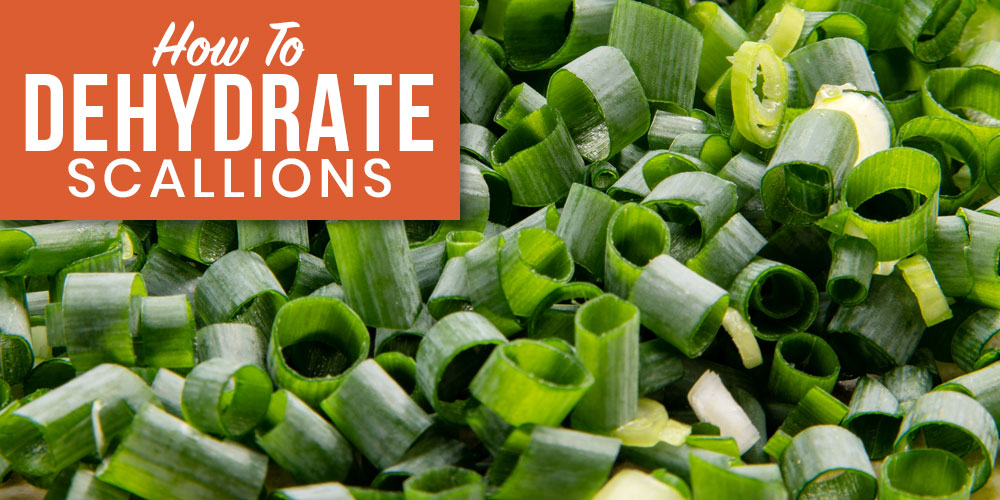
NAVIGATION
Knowing how to dehydrate scallions is the key to saving, storing, and enjoying these craveable vegetables all year round.
Scallions are easy to grow, and they’ll keep popping up and multiplying annually, so having a fresh supply during the warmer months is hardly any trouble at all.
I love to dehydrate scallions at the end of each growing season because I get used to having the fresh tang of these homegrown green onions in my meals, and I don’t want to go without it in the winter. Since they don’t freeze well, and they rarely taste as good when you by them at the store, learning how to dehydrate scallions can help you make tasty meals all year long.
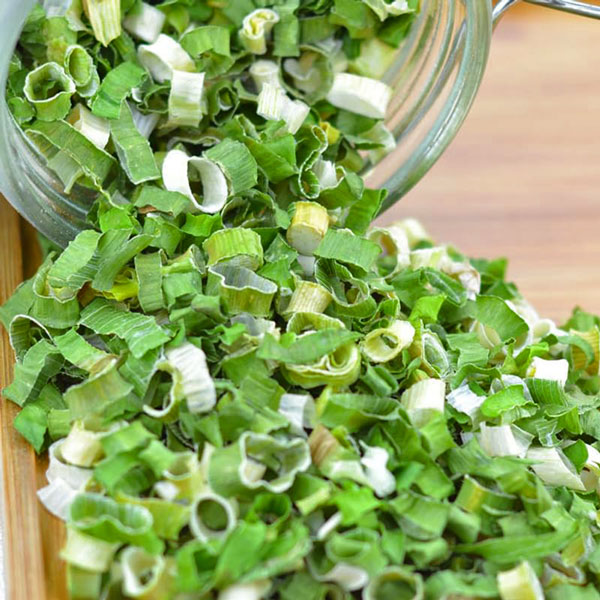

Hi, I’m Ryan
I enjoy growing my own fresh veggies in my garden. Learning to dehydrate vegetables has helped me make sure I’m not wasting my excess produce, and it also keeps me well supplied with fresh, healthy snacks and garnishes all year round.

Can You Dehydrate Scallions?

Yes, you can certainly dehydrate scallions. Once dehydrated, these green onions can be added to any recipe you’d use fresh scallions in — soups, casseroles, stews, and more. Dehydrated scallions are packed with good nutrients, and, when stored properly in airtight containers, can last up to a year.
What Varieties Of Scallions Can Be Dehydrated?
There are many different varieties of scallions (White Lisbon, Crystal Wax, and Ebenezer, to name a few), and all of them are safe to dehydrate.
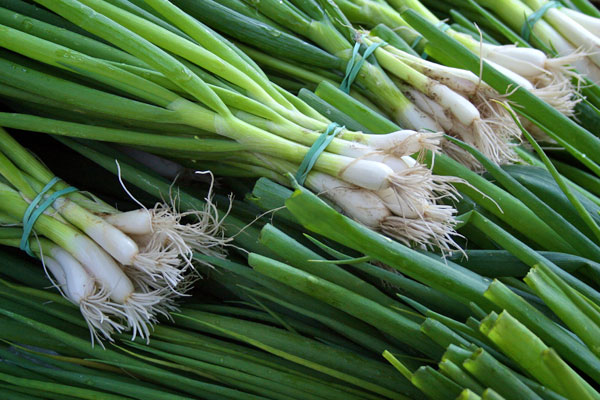
What Parts Of The Scallions Can Be Dehydrated?
I always separate the white from the green during the dehydrating process as the white part will take longer to dehydrate and will have a stronger taste.
TIP: Use your dehydrated scallions in place of onion powder in your recipes for a pleasantly fresh flavor.
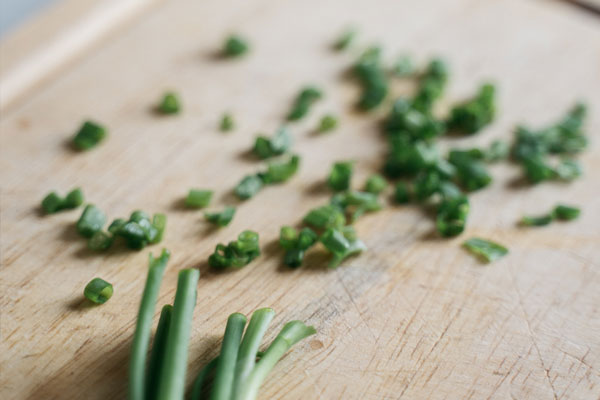
Do I Need To Peel Scallions To Dehydrate Them?
You don’t need to peel scallions before dehydrating them, but you will often find loose layers and leaves on your stems and roots. Pull these off before washing your scallions.
Do I Need To Blanch Scallions To Dehydrate Them?
No, you don’t need to blanch scallions before dehydrating them, which makes them different from most vegetables. Some people still prefer to blanch them. While this won’t exactly hurt, I find that it does remove some of the flavor and nutrients.
How To Dehydrate Scallions

All it takes is a simple process of washing, stripping, chopping, and drying, and you will be able to enjoy your dehydrated scallions for up to a year after the small amount of work you’ve put in.
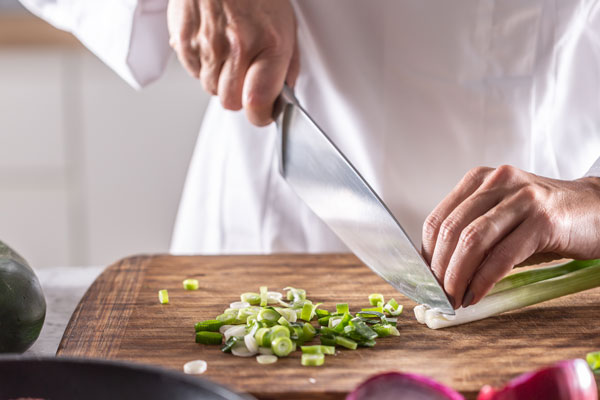
Equipment You’ll Need To Dehydrate Scallions

When I said the process was simple, I meant it. You’ll only need your dehydrator and a few basic kitchen items to get started.
Dehydrating Equipment
- Dehydrator
- Knife
- Cutting Board
- Airtight Container
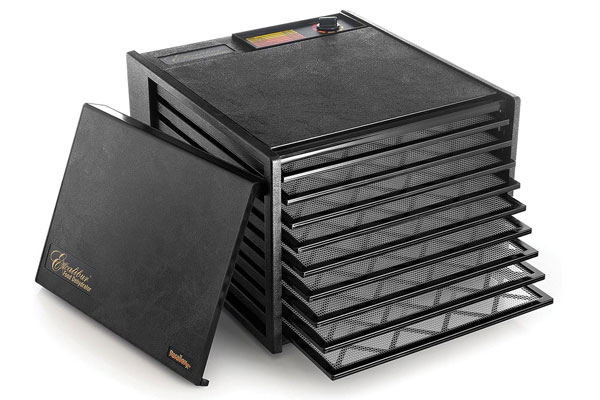
Steps To Dehydrating Scallions

The basic recommended temperature to dehydrate scallions is 125 degrees Fahrenheit (52 Celsius) for 3-5 hours.
I prefer a longer drying time at a lower temperature in order to preserve more of the nutrients, so you can also do 95 F for 6-8 hours if you have the time.
TIP: Use scallions instead of regular onions in dishes like ramen to add some onion flavor without the tear-jerking work of chopping an onion.
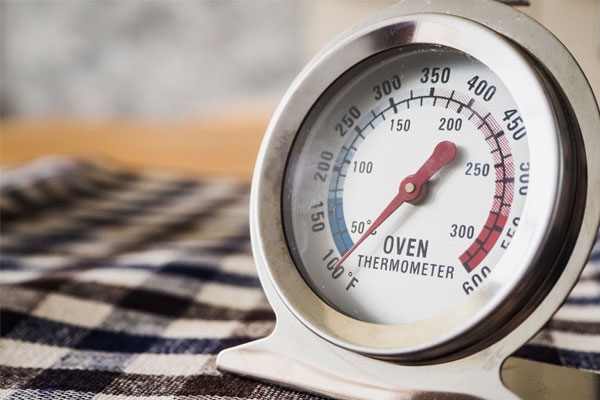
Steps To Dehydrating Scallions
- Cut Off The RootsChopping off the roots first will save you some time washing later. You don’t need to chop off the entire white part of the scallions — just the actual roots.
- Remove Loose Outer Layers And LeavesYou can strip the scallions of excess leaves and loose layers before or during washing, but I prefer to get these and the roots completely out of the way, so I can have a nice, easy washing and chopping process.
- Wash ThoroughlyYou don’t want to have dried dirt or bugs in with your dehydrated scallions, so make sure to give them a good washing before patting them dry and transferring them to your cutting board.
- Separate The White And Green PortionsWhile the entire stems of your scallions are good to eat, the white portion will have a stronger flavor and will also take longer to dehydrate, so I like to separate the two now for easier storage later. I also use the green and white portions for different recipes later on, depending on how strong of an onion taste I want.
- Chop Into Small PiecesUse a chef’s knife to chop your scallions into pieces that are as uniform as possible. This will ensure all the pieces dry at the same rate, making your dehydrating process go smoothly. You can easily separate the root layers in the white part by pushing a chopstick or something similar through the center.
- Dry In Single Layers In Your DehydratorSpread your chopped scallion pieces out in single layers on your dehydrator trays to make sure they dry evenly. At this time, go ahead and set your dehydrator to 95 F and set your timer for 6 hours (or 125 F for 3-5 hours).TIP: Check on your dehydrating scallions hourly to make sure you don’t accidentally burn them.
- Cool And Sample Your Dehydrated ScallionsCheck on your scallions at the 6-hour mark to see if they’re ready. Let them cool before testing them with your fingers. If they’re done, they will be dry and crumble easily in your hand. Put them back in as necessary until you achieve this result.
- Daily Shake Test For A WeekOnce your scallions are dehydrated to your satisfaction, place them in an airtight container, but leave it out on your counter for a week. Once or twice a day, give the jar a little shake and see if any of the pieces stick to the sides or clump together. If they do, there is still some moisture in there that needs to be removed. Stick them back in your dehydrator for a while and try again.
- Store And Enjoy For A YearOnce they’ve passed the shake test, your dried scallions are ready to store and enjoy for the next year.
How Do You Tell When Your Scallions Are Done Dehydrating?
The only way to tell when your scallions are really done dehydrating is when they pass both the crumble and shake tests I mentioned earlier. Covering your bases with both methods ensures your zesty treasures don’t go bad in storage.
Can You Use A Stove Instead Of A Dehydrator For Scallions?
Yes, you can use a stove to dehydrate scallions if you don’t have a dehydrator. Follow the above instructions, and then place your chopped scallions on some parchment paper, ideally on top of a cooling rack. If you’d like to, you can set this on a cookie tray and put it in your oven on the lowest setting your oven allows for 3-4 hours, checking often to prevent burning.
How To Store Dehydrated Scallions

The two most important things about storing dehydrated scallions are making sure they are completely dry and sealing them in an airtight container. I like storing them in a glass jar so that I can easily see what is inside. Your food storage area should be dark and cool, and preferably low humidity.
How Long Will Dehydrated Scallions Last?
While dehydrated scallions are known to last up to a year in sealed storage, they are going to be the freshest during the first three to four months. The more you open the container, the shorter shelf life they will have.
How To Use Dehydrated Scallions In Your Cooking

Now comes the fun part! You can use your dehydrated scallions as they are, or you can re-hydrate them or even use a coffee grinder or food mill to grind them into green onion powder.
Fresh To Dehydrated Scallions Conversion
Dehydrated scallions have a much more intense flavor than fresh ones do, so you’ll want to factor this into your recipes. One tablespoon of dried scallions will be the equivalent of four tablespoons of fresh ones.
How To Re-Hydrate Dehydrated Scallions
Nothing could be simpler than re-hydrating your chopped scallions. Simply place them in a bowl with some boiling water and watch them come back to life.
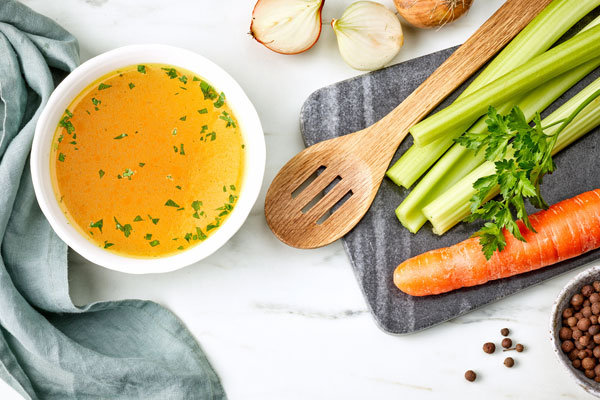 The nice thing about this process is that you can use that broth to add extra flavors to your recipes, or even freeze some of it for later use.
The nice thing about this process is that you can use that broth to add extra flavors to your recipes, or even freeze some of it for later use.
Now that you know how to dehydrate scallions and how easy it is, I hope you are inspired to make your own jar of these delicious dried vegetables to add to your recipes all year long.
From everyday meals to holiday occasions, having that fresh kick of oniony goodness from these nutritious veggies can bring variety and pizzazz to your dinner table.
Your Turn!
- Do you prefer to blanch your scallions or dehydrate them raw?
- What are some of your favorite vegetables to dehydrate?





Leave a Reply